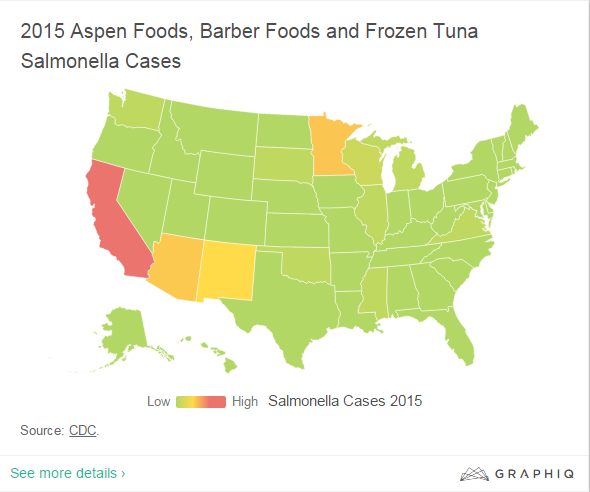Salmonella Outbreaks In 2015: Find Out Which Areas Of The US Have The Most Salmonella Infections

If you haven’t been paying attention the past couple of years, Salmonella rates have been fluctuating depending on what area of the United States you live in. Knowing if your state is a hotbed for Salmonella infections and what causes outbreaks are good ways to make sure you don’t become infected yourself.
This data from the Centers for Disease Control and Prevention shows Salmonella incidence rates in the U.S. by year, state, and three of the top dietary causes. Salmonella infections are most common in this country.
Salmonella incidence rates in the U.S. stayed on the lower end between 2003 and 2007 after hitting a high of 16.24 cases per 100,000 people in 2002. However, rates shot back up to 16.10 per 100,000 people in 2008 before eventually hitting 17.55 per 100,000 people in 2010.
Among U.S. states with the highest rates of Salmonella infections this year, Florida (3,352 cases), California (2,967 cases), and Texas (2,503 cases) are ranked highest as of Sept. 4, 2015. Of these three states, only California was affected by Salmonella outbreaks caused by products from Aspen Foods, Barber Foods, and Frozen Tuna.
According to the CDC, Salmonella results in one million illnesses, 19,000 hospitalizations, and 380 deaths in the U.S. each year. Infections caused by Salmonella tend to be more common in the summer compared to the winter.
Published by Medicaldaily.com



























